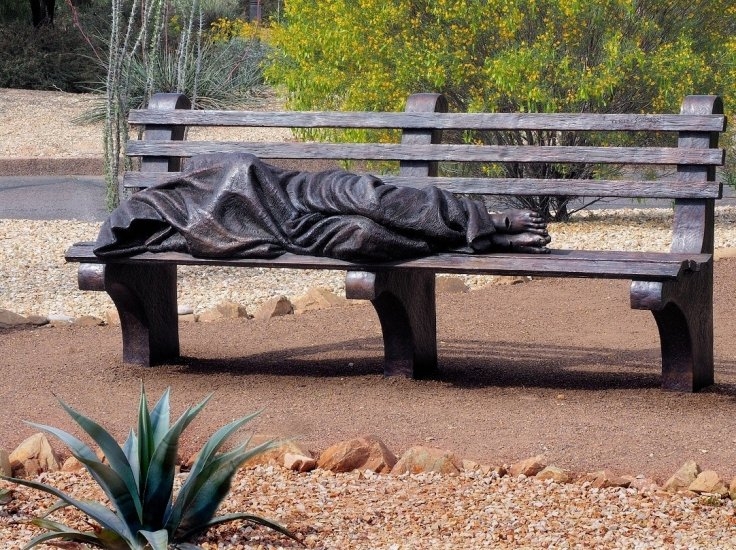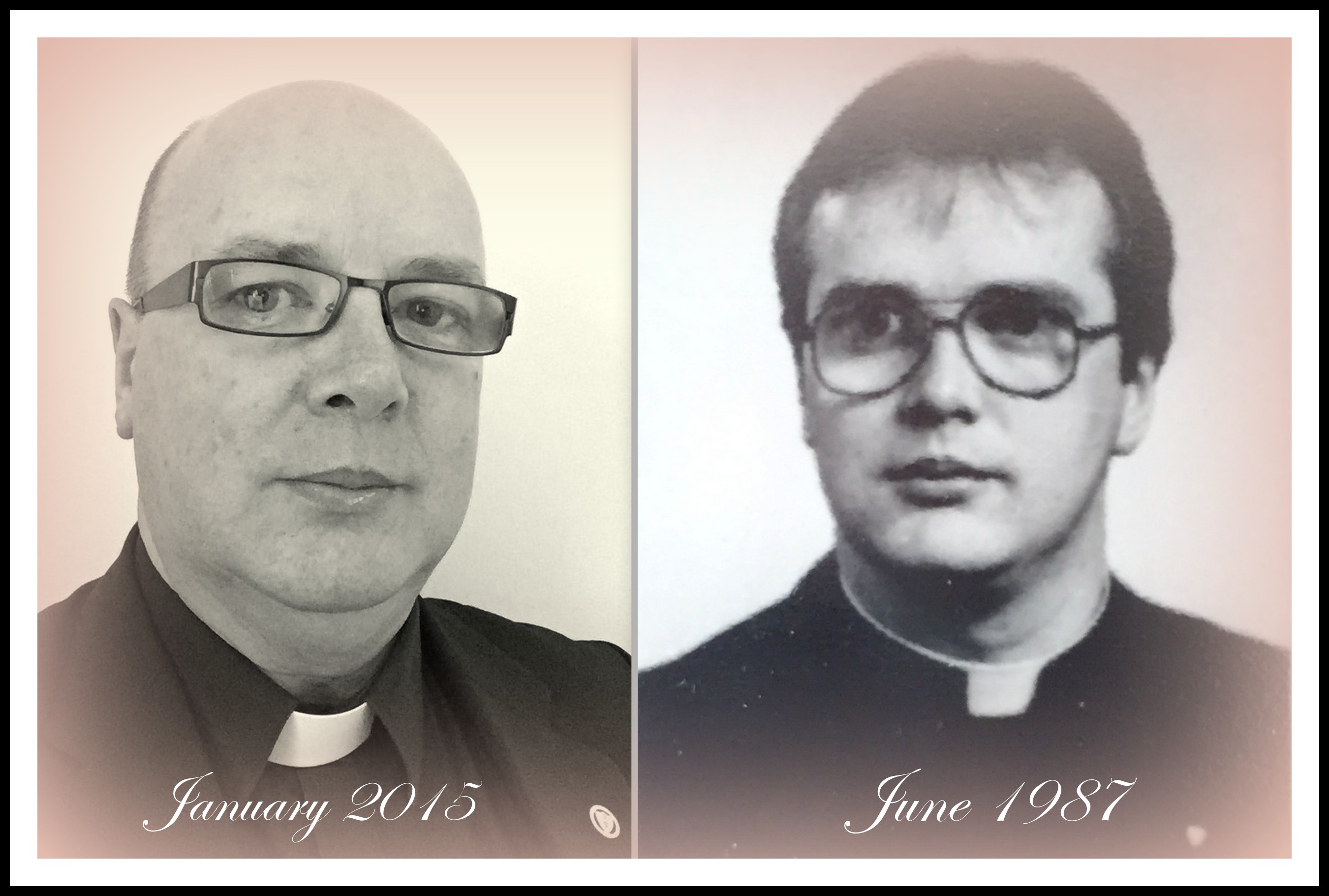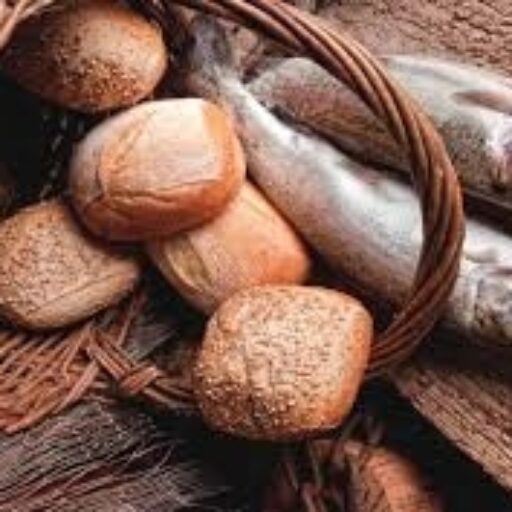
by Vincent | Jan 13, 2018 | Reflections, Parish and Diocese, Religion, Photography

“Homeless Jesus” – a statue in Glasgow
It was a straightforward question enough. So too, the answer: “Come and see”.
They did and “spent the rest of that day with him”. No mention of where they went, what they did or who they met. But whatever all that entailed, it took the rest of the day – no, more than that, the rest of their lives.
Do you ever wonder where they went? It’s strange that we’re not told but it seems certain they didn’t go to an address.
This picture above is of a statue of the “Homeless Jesus” and there’s a definite truth in it. Jesus seeks to make his home among us, in our hearts and lives. He is certainly found among the homeless and the searching, the poor, those who are lonely or hard-pressed.
I saw him this week in the eyes of a widow coming to terms with the death of her husband and again in the flowing tears of a man whose wife had just died. Met him in the home of a young couple just weeks into being parents and amazed that love of a child is such an overwhelming feeling. I heard him in choirs singing, musicians playing and men and women of the parish, reading his Word into our hearing.
He lives in our midst. You’d like to think he’d have brought his disciples to meet us.
<
p data-css=”tve-u-160f11ea21f” style=”text-align: right;”>(From Kilmovee Parish Bulletin – 2nd Sunday in Ordinary Time – 14th January 2018)

by Vincent | Jan 15, 2017 | General Interest, Reflections, Religion, Video Clips

by Vincent | Jan 18, 2015 | General Interest, Reflections, Parish and Diocese, Religion
There was a fine crowd at Mass today in Kilmovee. Given the weather conditions and state of the roads, I had expected a small attendance. Fair play to people for making the effort to mark the “Sunday in every week”.
I hadn’t planned on speaking at all but plans don’t always …. go to plan:)
In recent weeks, I’ve been at a few meetings in the diocese where we spoke about vocations to the priesthood. One of the questions posed was when was the last ordination in our parishes. I’ve thought about that a bit. The last ordination in my home parish of Gurteen was in 1988. The last in the neighbouring parish of Ballymote, 1985 and in Ballaghaderreen, 1992. In the past twelve years we’ve had two ordinations in the diocese. In Kilmovee, where I now minister, the last ordination was in 1981.
Interestingly in Ballaghaderreen, it is on record that in almost 100 years of the Brothers’ School, 100 priests were ordained. I can think now of six men from Kilmovee Parish who are currently ministering as priests but, as mentioned, the last of them was ordained 34 years ago.
A woman in the parish told me she could recall eleven people from her village that were in Religious Life when she was a younger woman. How many villages could say that today?
Anyway, I found myself talking about this today at Mass. The readings of the day pointed towards the need to say a few words. The first reading and Gospel, in particular, spoke of calls received and shared. The boy Samuel, heard a call in the night and assumed it was Eli calling him. Twice he went to him but Eli assured Samuel that he had not called him. The third time this happened, the penny dropped for Eli, and he told the boy to go back and lie down. If the voice comes again, he told him, “say speak Lord, your servant is listening”. So it happened. Eli’s role in this call is central. Had he not a clear notion of God himself, he could scarcely have pointed Samuel towards the opening of the ear, mind and heart to God’s call.
Equally, in the Gospel passage, the Messiah is found through the question “Where do you live?” The response, “come and see” allowed space and time for the questioners to come to know the Lord and hear his call. Having heard it, they went about sharing it with others, among them Simon, instantly recognised by Jesus as “the rock” – the solid one on whom the church would be built. The call to Simon came from God but its origins were in the voice of known friends who wanted to share, with him, the call they’d encountered whilst spending time with the Lord – coming and seeing.
We all then have a role to play in vocations and in extending the range of the call to others. The call may not be to us but THROUGH us. What can we do to share this call with other people?
I mentioned today that I am almost fifty-two years old. It’s small consolation that I am still regarded as one of the younger priests in the diocese. When I was ordained, a man in his fifties seemed so old to me! I wondered did I look old to the children in the parish. I decided on an instant survey:) Turning to Seán who was serving Mass with his sister, I asked “Do I look young or old to you Seán?” He didn’t avoid the question or hesitate with his answer – “Old”, he said. Seán deserves to see a younger face before him. I’m happy to be here with Seán and hope that he, and others, can be happy about that too. The fact remains, nonetheless, that Seán needs a younger priest to journey with him. There’s over forty years of an age gap between he and I. That’s too much.
Do we need younger priests? I believe we do. There’s a feeling now that if a young man expresses an interest in priesthood, maybe in his Leaving Cert year, that he’d be advised to go out, experience life, get a degree or a trade and, if he still feels this way in a few years, come back and explore the possibility. I can see where this thinking comes from and has value but I have to question it. At this same stage in life, schools are asking students to focus their exam subjects around what they want to do in life. CAO forms are completed where students select, in order of preference, their chosen college and, by implication, chosen career. If a young boy or girl, aged 17 or 18, expressed an interest in medicine, pharmacy, the Gardaí, nursing, teaching, farming – nobody would say, go away for a few years and think about it. If it’s still what you want, then go for it. Why should priesthood or religious life be different?
Yes, it’s true of course, that these other professions don’t have attached a call to remain single for life. Needless to say, that is a serious consequence but maybe one that a person can grow into, explore and, if too much to deal with, re-assess over the years of training. It’s almost certain that most people beginning training in any other walk of life are doing so as single people. It’s during the years of study and discernment, they make decisions around relationships.
There has to be a place in our church for young people, like Samuel, hearing God’s call and there has to be a place too, for Eli (you and me) to help people hear that call.





